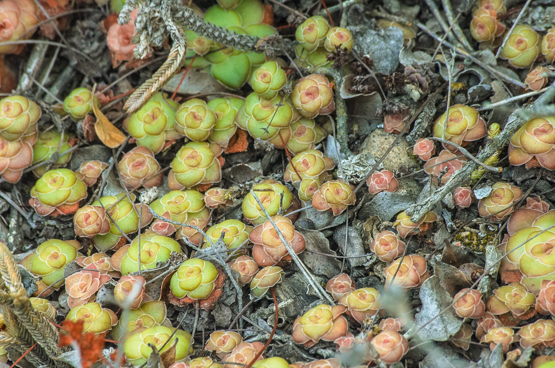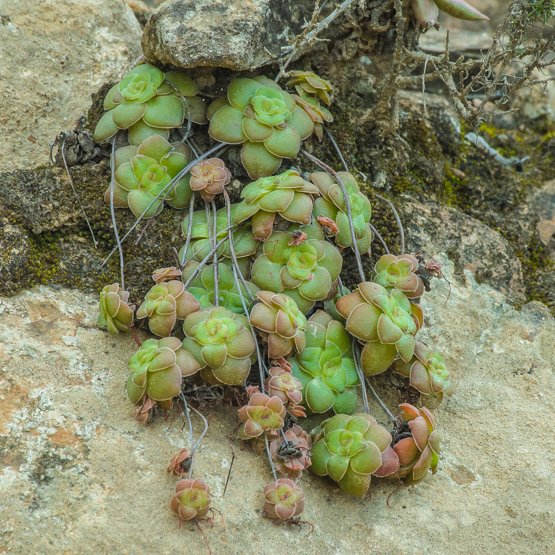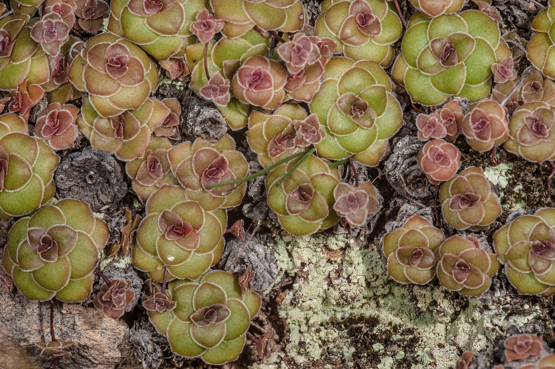
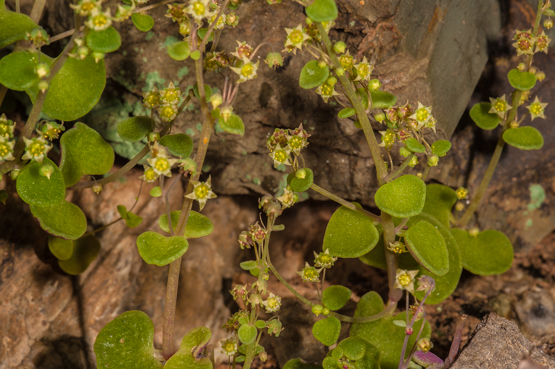

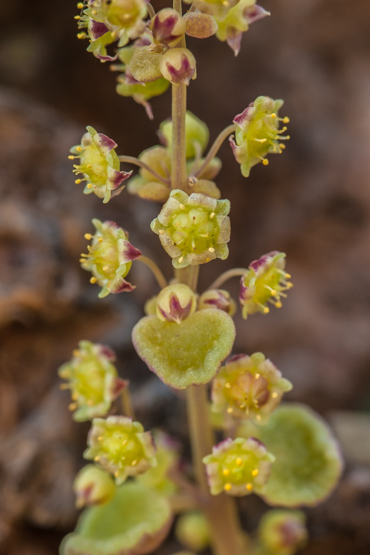




These charming little plants have erect or sprawling stems , 4-10 (-15) cm long.
They are geophytes, with many small tubers (rarely over 0.5 cm in diameter).
The slightly fleshy leaves are grey-green or greyish brown and the star- to cup-shaped flowers are pale yellowish-green to brown with 2-3.5 mm long lobes.
While the flowers usually appear between June and August, depending on rainfall this may also happen at other times.
The distribution area ranges from South Namibia to the Little Karoo and the Eastern Cape, but the plants only occur in sheltered spots on rocky slopes and in crevices.
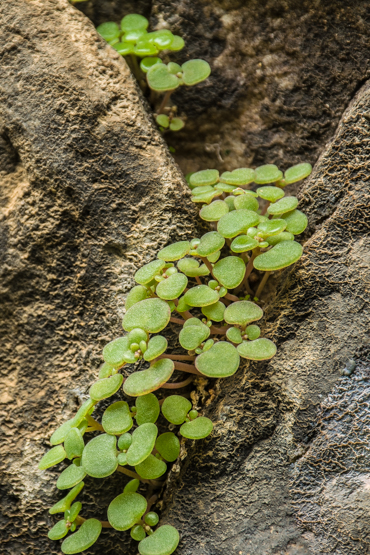

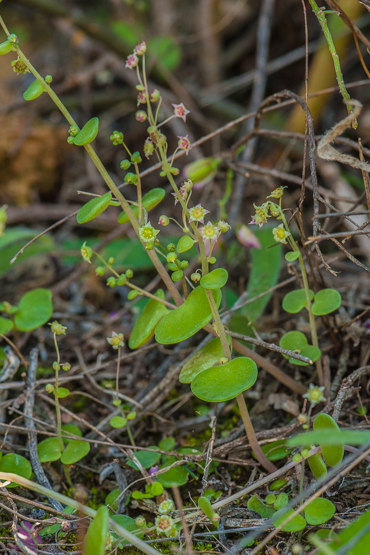

This very distinctive species normally produces one single stem up
to 8 m tall and only 10-15 cm thick. Sometimes, plants branch from the base and form large shrubs.
Each stem bears about 25 leaves, up to 90 cm long and grey-green on both sides; the sap is poisonous.
The inflorescences are much-branched, with carmine to reddish-orange flowers.
The species is found in more or less dense bushland and thickets along rivers in
southern Kenya and northern Tanzania at altitudes between 900 and 1500 m.
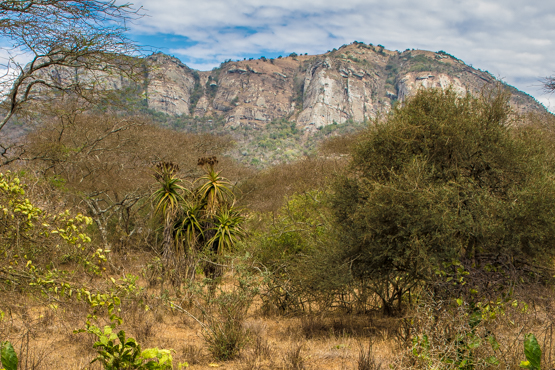
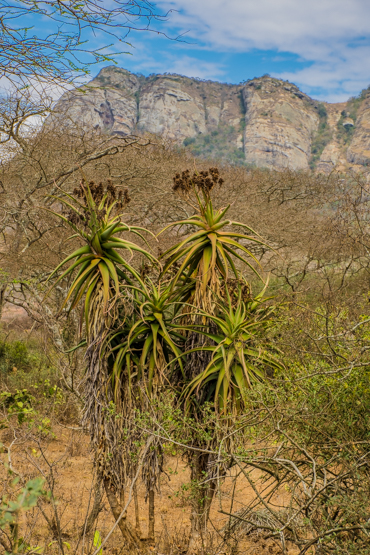
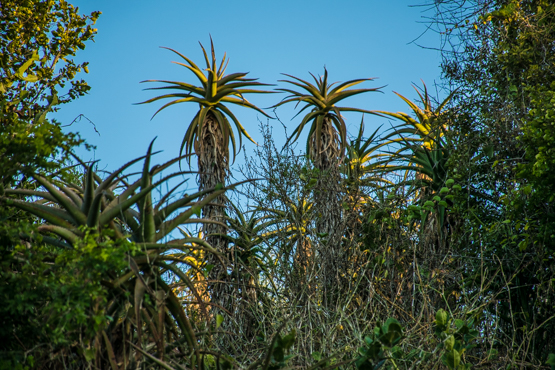

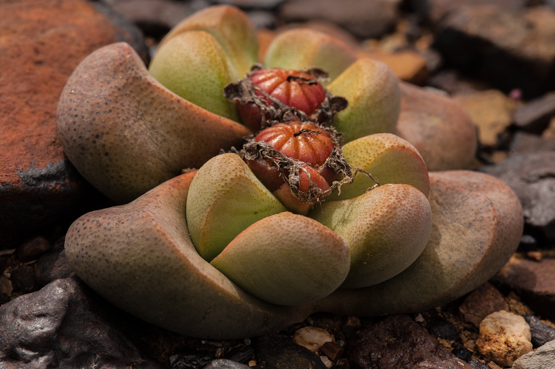
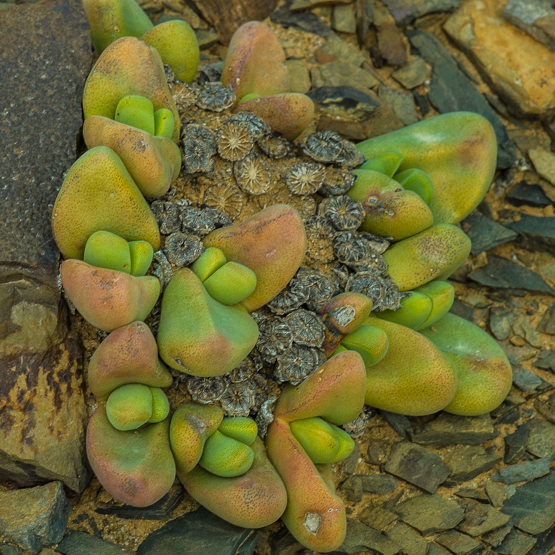
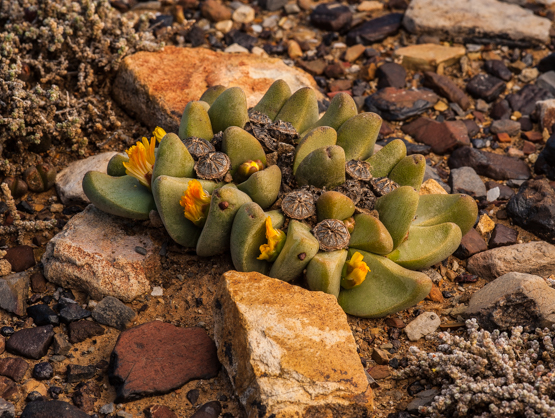

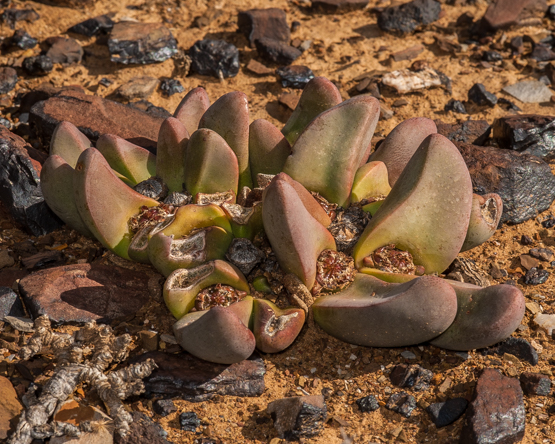
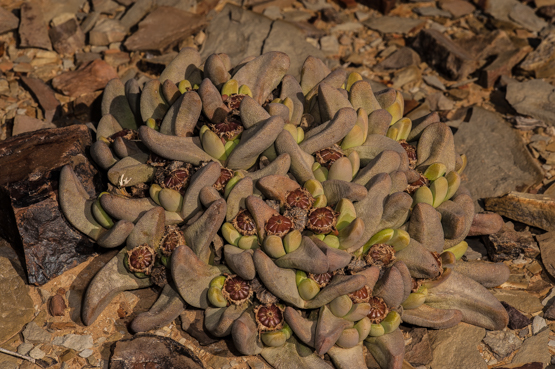
There are only three species of Tanquana; the other two being T. hilmarii and T. archeri (which I have never seen). All three used to be called Pleiospilos because of the dotted leaves, but actually the two genera are not closely related.
Over time T. prismatica may form clusters of up to 30 branches. The leaves are unequal, egg-shaped in young plants but more oblong later, with a length of 2.5-4 cm.
The strongly scented flowers are to 4 cm in diameter and appear from February to May.
The plants are not uncommon on stony flats in the Ceres-Laingsburg area, where they receive 100-150 mm rain per year, mainly in winter.
Below are some pictures to give you an idea of the conditions in the plants’ habitat.
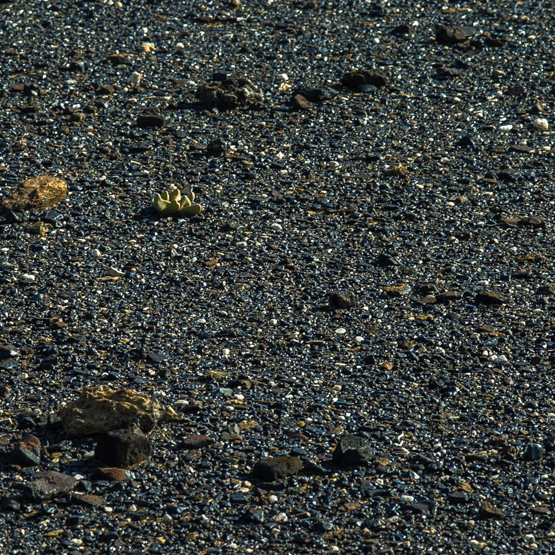
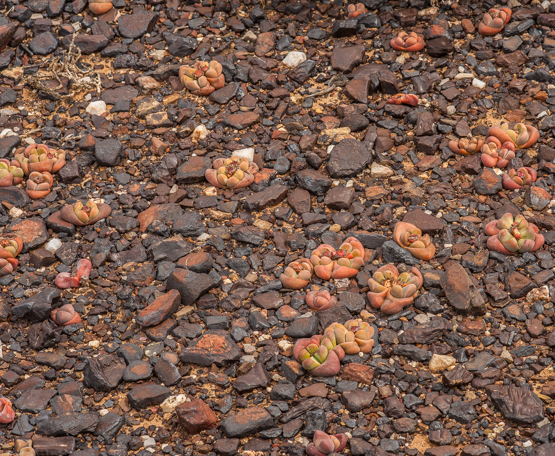
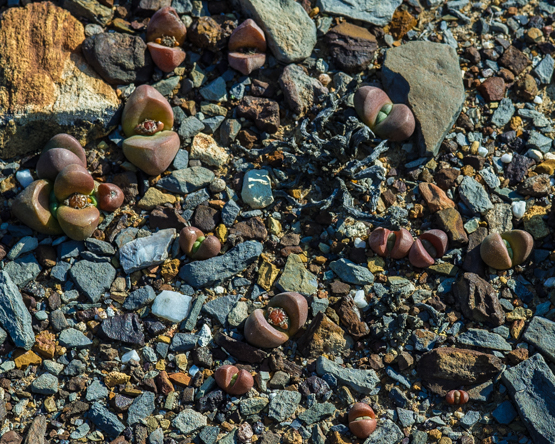
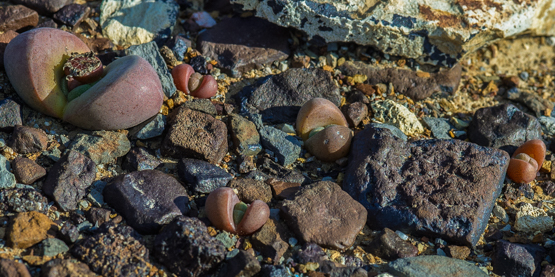
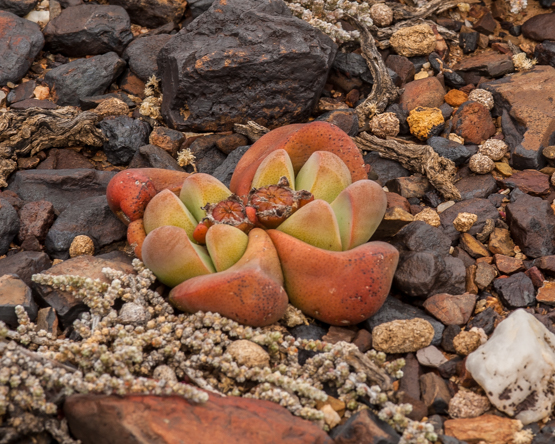
In contrast to their near relatives Cotyledon, Tylecodon and Kalanchoe, almost all Adromischus species have rather insignificant flowers.
This species is an exception with flowers 1.5 cm in diameter at the widest part (the biggest in the genus). They are white or pink, with a pink to purple midstripe on the lobes, and appear in summer and autumn (Jan.- April).
The plants are up to 11 cm tall and to 14 cm in diameter, with leaves up to 3.5 cm long and to 2.3 cm wide.
They are widespread from Robertson to Uitenhage and in the coastal plain south of the Little Karoo* , usually on sandstone slopes among bushes.
*The first picture was taken at Cape Agulhas, Africa’s southernmost tip.
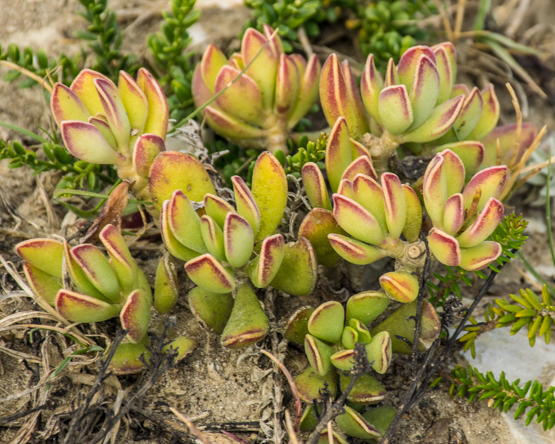
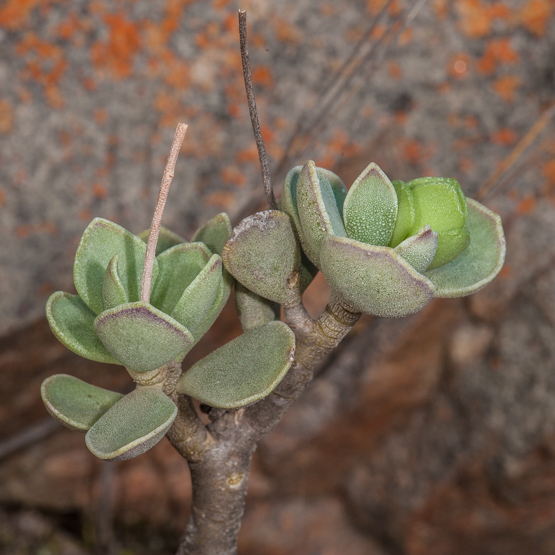

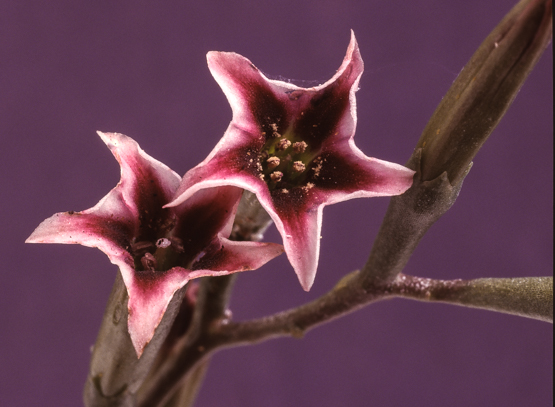
Attractive dwarf shrublets up to 15 cm tall with a caudiciform base up to 3.5 cm in diameter.
Branches are short and fat, with peeling yellow-brown bark; covered with flat white phyllopodia (leaf-bases) when young. The leaves are usually up to 4 cm long and 5-7 mm wide.
The flowers are tubular, erectly spreading to pendulous and relatively large (up to 1.8 cm long). They appear in November and December.
This species is widely distributed from southwest Namibia to the Knersvlakte, on flats and stony slopes, often with quartz rocks or pebbles.
Rainfall in the area is 100-200 mm per year, mainly in winter. The temperatures are high in summer and moderate in winter, sometimes with light frost.

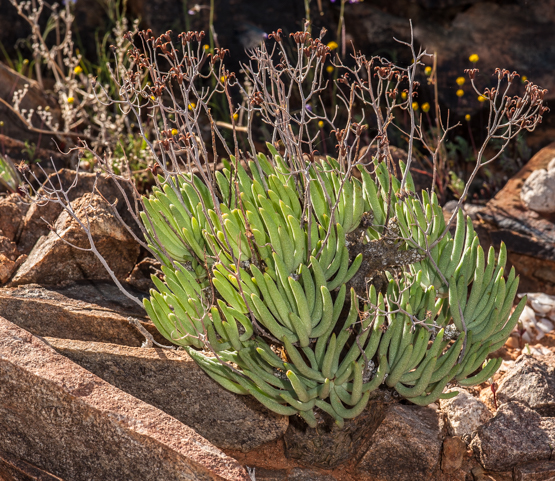
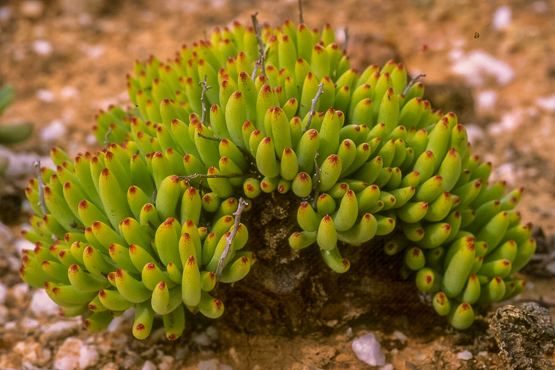
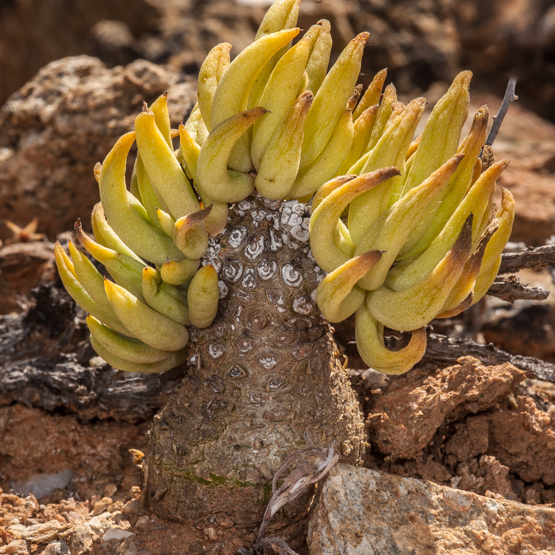
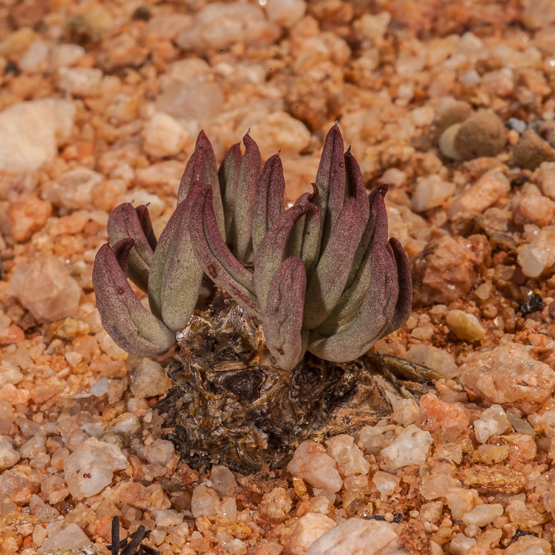

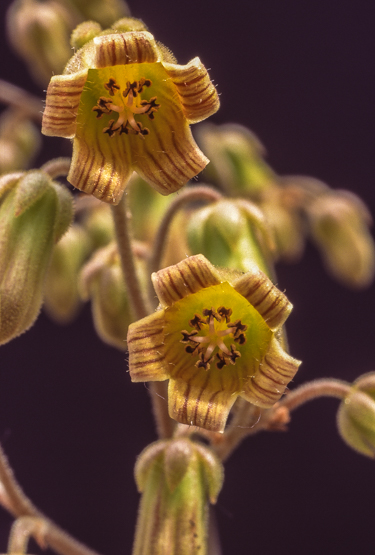
The following pictures were made a few days ago in the Zuurberg area in the Eastern Cape. The first three show the form which used to be known as Cr. rosularis.
All plants were growing in the same spot.
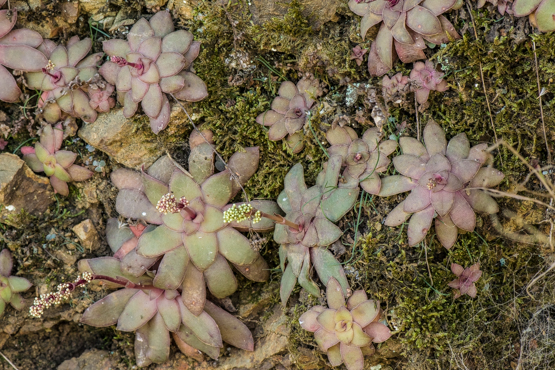


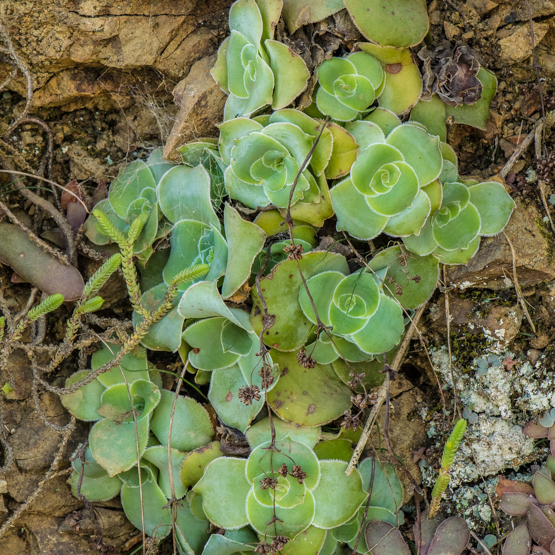

Depending on the environmental conditions, this species produces few to many rosettes with long runners, often forming dense groups up to over a metre in diameter.
Each rosette has 10-12 flattened and slightly fleshy leaves, which have a dense row of hairs along the edges and are green to brownish green, sometimes partially tinged pink to red.
The size of the leaf varies from 8 to 80 (sometimes even 100) mm long and 4 to 20 (-26) mm wide, again depending on environmental conditions.
The inflorescence is up to 20 cm tall, with small flowers (white to pale yellow, often with pink or reddish brown hue) appearing in June to November.
The species is widespread from Worcester to the eastern Cape and KwaZulu-Natal,
usually in sheltered southern slopes under rocks or bushes; often on rocky outcrops in forested areas.
